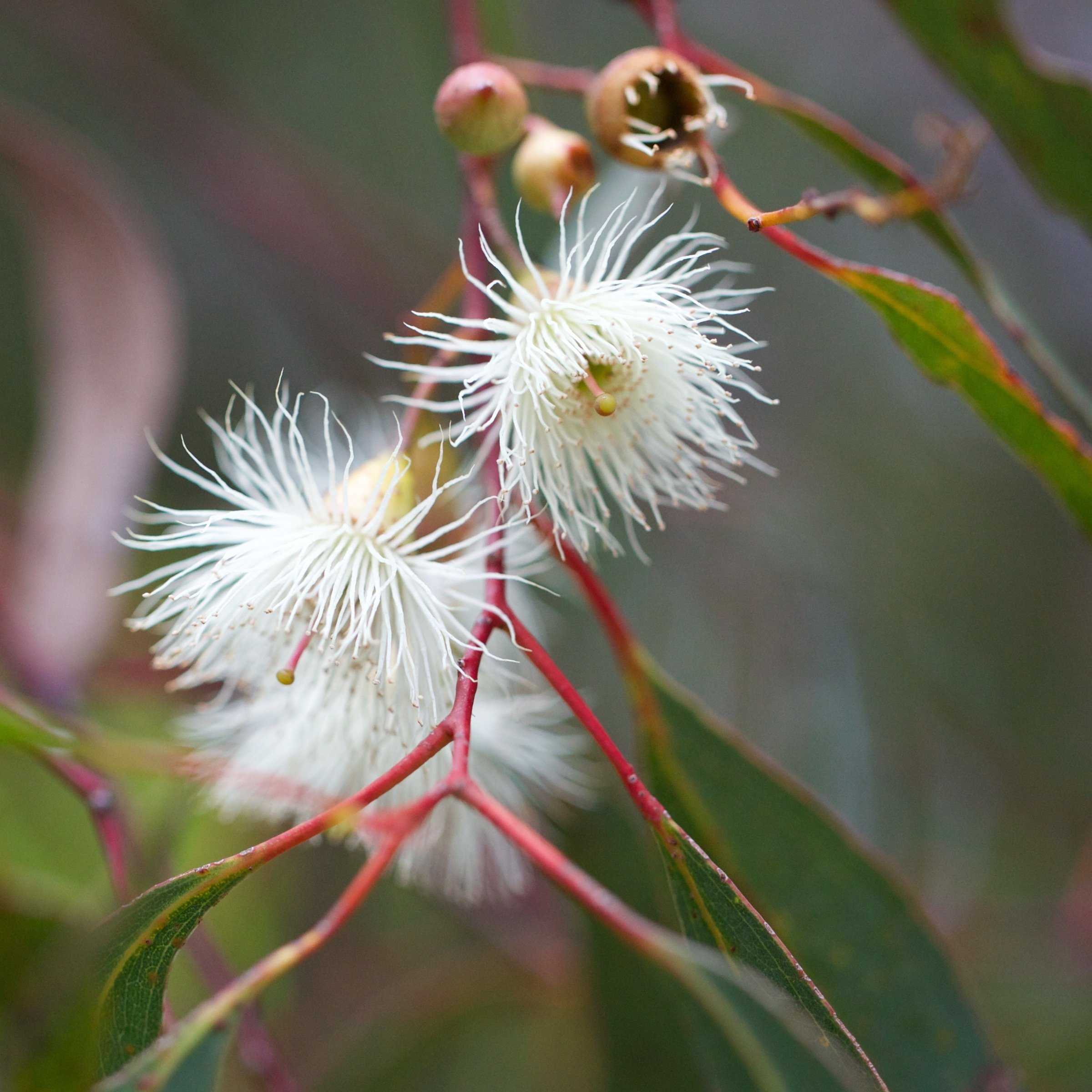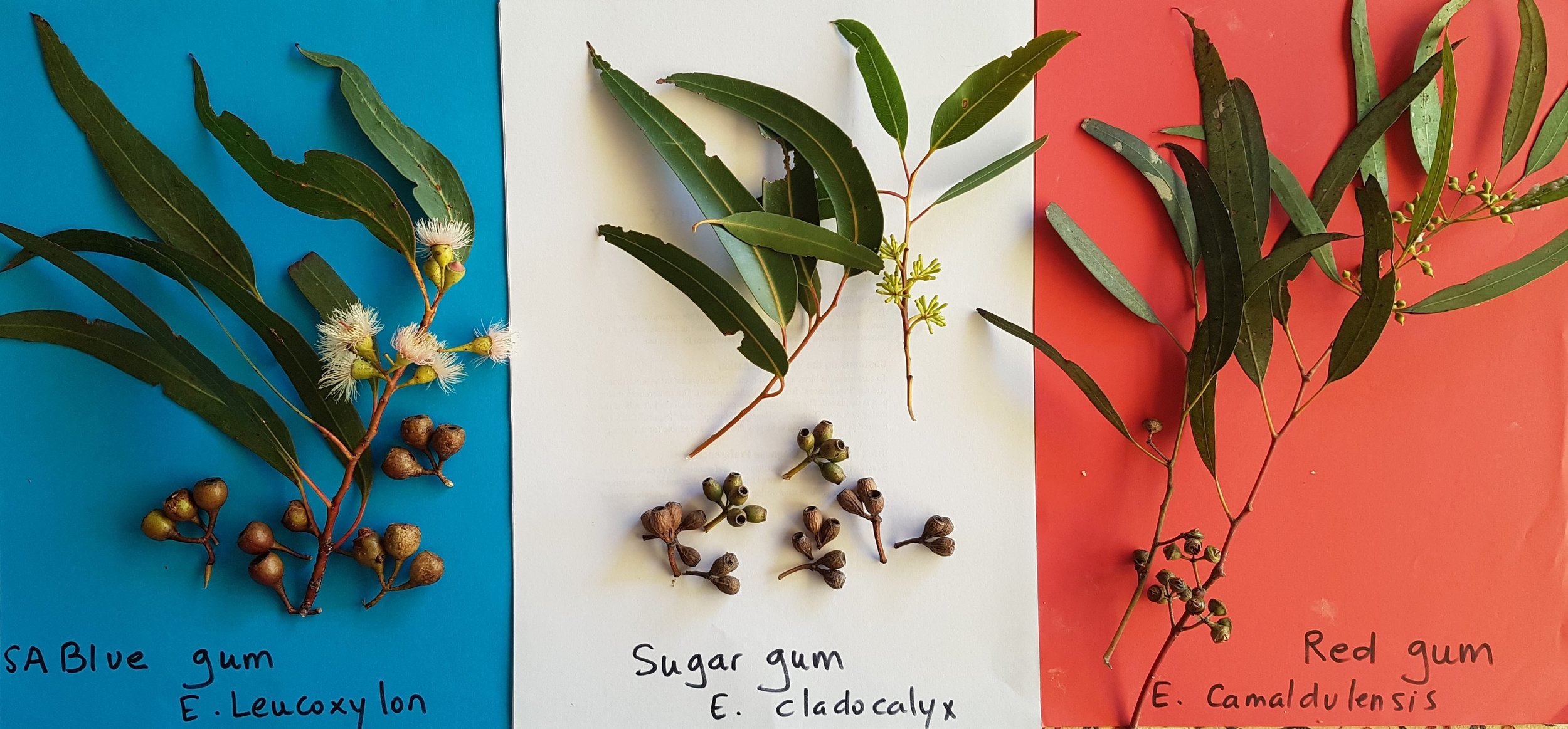by Juliet Bodycomb
Your Adelaide Park Lands are home to many kinds of plants, but it’s not always easy to identify them. Throughout this series, Know Your Park Lands Plants, we’re taking a closer look at the plants that call your Park Lands home.
First: Eucalyptus leucoxylon, a medium-sized tree that is usually known in South Australia as the “Blue Gum”. In other parts of Australia, it’s commonly known as “yellow gum” or “South Australian blue gum.”
Blue Gums are scattered throughout your Open Green Public Adelaide Park Lands.
However, they are most prominent in the southern and western Park Lands.
You might have seen them in Pelzer Park / Pityarilla (Park 19), G. S. Kingston Park / Wirrarninthi (Park 23), or Blue Gum Park / Kurangga (Park 20) – the latter named after this very tree!
Blue Gum in Pelzer Park / Pityarilla (Park 19). Pic: Juliet Bodycomb
The Blue Gum is native to south-eastern Australia. Growing from 10-30 metres in height, it is known for its grey-blue coloured bark, which is fibrous and flaky around the base of the trunk, and smooth on the upper trunk and branches.
Its scientific name “leucoxylon” is derived from the ancient Greek leuco- meaning “white”, and -xylon meaning “wood”.
Blue Gums in G. S. Kingston Park / Wirrarninthi (Park 23)
Its lance-shaped leaves grow up to 20cm in length, and are often accompanied by cream or red flowers, which can be observed from Autumn to early Spring.
Blue Gum leaves in G. S. Kingston Park / Wirrarninthi (Park 23)
What sometimes confuses observers is the variety of colour in the blue gum blossoms. Eucalyptus leucoxylon trees situated right next to each other can have different coloured blossoms: white, yellow, or red, but they are all the same species.
Pic: J. Burgher (2012)
Blue Gum flowers and leaves in Pelzer Park / Pityarilla (Park 19). Pic: Juliet Bodycomb
The Blue Gum plays an integral role in its ecosystem. Flowering in the cooler months, it attracts nectar-feeding birds such as the Rainbow Lorikeet, the Noisy Miner, and the Eastern Spinebill. Its nectar and pollen also attract possums, insects, and native bees. As well as providing food for neighbouring animals, this large tree provides a roosting and refuge habitat for creatures of all kinds.
A blue gum in West Terrace Cemetery in G. S. Kingston Park / Wirrarninthi (Park 23). Pic: Insidrelic
Though the Blue Gum thrives in moist soils, it is tolerant of Adelaide’s intense, dry heat. Moreover, unlike deciduous trees, the Blue Gum is evergreen, allowing it to protect your Park Lands’ inhabitants from sun and wind, all year round.
How can you tell them apart from other eucalypts? These three eucalypts are all common in your Adelaide Park Lands but they can be distinguished from each other by examining their leaves and pods:
Image: Charlotte Hy
Want to know more about the plants in your Park Lands? Head over to iNaturalist, where you can record, share, and discuss your findings with fellow naturalists.
See the other plants featured in this series here:
https://www.adelaide-parklands.asn.au/know-your-park-lands-plants










